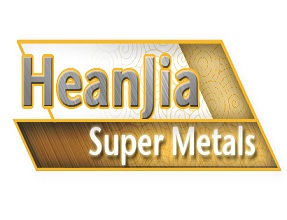Product (738)
- Pure Nickel Products (38)
- Incoloy Products (74)
- Inconel Products (72)
-
FeCrAl Product
(99)

-
Nichrome Products
(68)

- Monel Products (36)
- Hastelloy Products (49)
- Nickel Iron Alloy Product (59)
-
Nickel Copper alloys
(47)

- Nonferrous Metal Product (27)
-
Resistance Wire
(90)

- Stainless Steel Product (42)
- Mesh Demister (20)
- Others (17)
Product Forms (14)
Quality Certificate (11)
Learning Gallery (30)
Incoloy News (9)
Inconel News (22)
Molybdenum News (7)
Nikrothal News (4)
Nichrome News (13)
Titanium News (2)
Nickel News (8)
Alloys House (30)
Tools (27)
Nickel alloy News (30)
Latest Buzz (30)
nickel chrome copper iron alloys news (28)
Credit Report
Products Index
Company Info
Heanjia Super-metals Co., Ltd. [China (Mainland)]
Business Type:Manufacturer, Trading Company
City: Beijing
Province/State: Beijing
Country/Region: China (Mainland)
Tools
How to Select the right Corrosion Resistant Alloys in the Oil and Gas Industry

Corrosion Resistant Alloys (CRAs) are essential for providing long term resistance to corrosion for many components exposed to oil and gas production environments. Components include down hole tubing and safety critical elements, wellhead and Xmas tree components and valves, pipelines, piping, valves, vessels, heat exchangers and many other pieces of equipment in facilities. There are many CRAs to select from, and they can be characterized by their resistance to specific environments.
Key environmental parameters influencing the corrosion properties of CRAs are:
• Temperature
• Chloride ion concentration
• Partial pressure CO2
• Partial pressure H2S
• Environment pH
• Presence or absence of Sulphur
Between them these parameters influence
• the stability of the passive film (initiation of pitting or general corrosion)
• ease of repassivation of initiated pits
• rates of dissolution of metal from pits
• the risk of Stress Corrosion Cracking (SCC) initiating and propagating
Methods for Selecting CRAs
The selection of Corrosion Resistant Alloys, CRAs, for producing and transporting corrosive oil and gas can be a complex procedure and if improperly carried out can lead to mistakes in application and misunderstanding about the performance of a CRA in a specific service environment.
There are a variety of ways individuals and companies select CRAs for anticipated well and flow line conditions. Companies with large research facilities typically initiate a test program that involves simulating the particular part of the field environment under study (i.e. flow lines versus down hole). Then a group of alloys, based on information available, is selected that represents a possible range of alternatives. Rather than test all alloys all the time, it is more cost effective and less time consuming to test only a few CRAs that are likely candidates. This approach can easily require 1 to 3 years to accomplish at considerable expense.
Another selection procedure is to review the literature for corrosion data that generally applies to the anticipated field conditions. This can result in elimination of those CRAs that are not good candidates and, thus, narrow the number of candidate alloys for testing. The selected CRAs are then tested under very specific conditions to fill gaps in literature data and/or field experience.
Care must be taken when using this approach because, for example, the corrosion resistance of many CRAs at one temperature is not necessarily indicative of their corrosion resistance at other temperatures. Likewise, changes in critical environmental components such as elemental sulphur can have a profound impact on the resistance to stress corrosion cracking (SCC), another important factor in alloy selection.
Other resources for materials selection are also available such as the 2003 ISO 15156 publication which was derived from the previous NACE 0175 publication for "sour service" and the EFC16 publication which incorporated the influence of environment pH on the suitability of materials for sour service. The ISO15156 standard covers different alloy types with separate tables for different applications; though field experience in many cases has shown that alloys will withstand more aggressive conditions. Corrigenda are published from time to time to update its contents and so it is important to obtain the latest version and corrigenda.
The quickest and least expensive alloy selection method is simply to review the literature, and existing or similar field data, and make the selection. This method can be quite unsatisfactory since certain critical factors or conditions will not be known and must be assumed. A greater chance for error exists in this selection approach, introducing a potential for failure of the CRA or use of a more expensive alloy than is required. It is advisable, if this method is used, to consult with someone who has a working knowledge of CRAs and their applications.
Finally, a CRA selection method that is not recommended but is often used is to select a CRA that is readily available or most economical, without regard to its corrosion resistance in the intended environment. Misapplication of CRAs is becoming more common for this reason and has resulted in corrosion and cracking problems of the inappropriately selected alloys.
However, it is recognized that before extensive efforts are made to make a final CRA selection for a specific application it is often desirable, if not necessary, to make preliminary selections of candidate CRAs to test in a simulated field environment or to perform an economic analysis to judge the cost effectiveness of several corrosion control alternatives (i.e. carbon steel plus inhibitors, CRAs, etc.). It is for these latter needs that these guideline diagrams are offered and should only be used in that fashion. More detailed testing and analysis is often required in order to make a final selection.
Pre Page:
Woven Wire Mesh Types
Next Page:
FeCrAl Resistance Wire Resistivity



